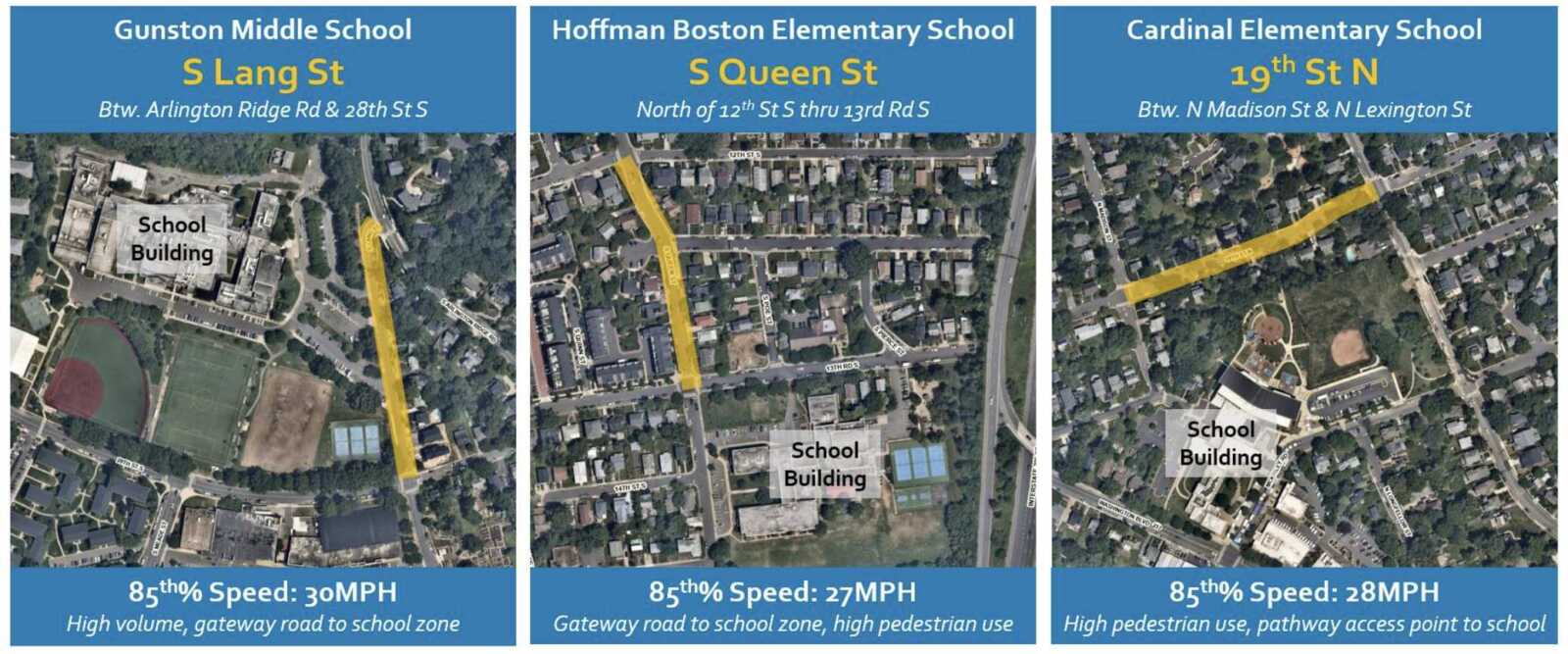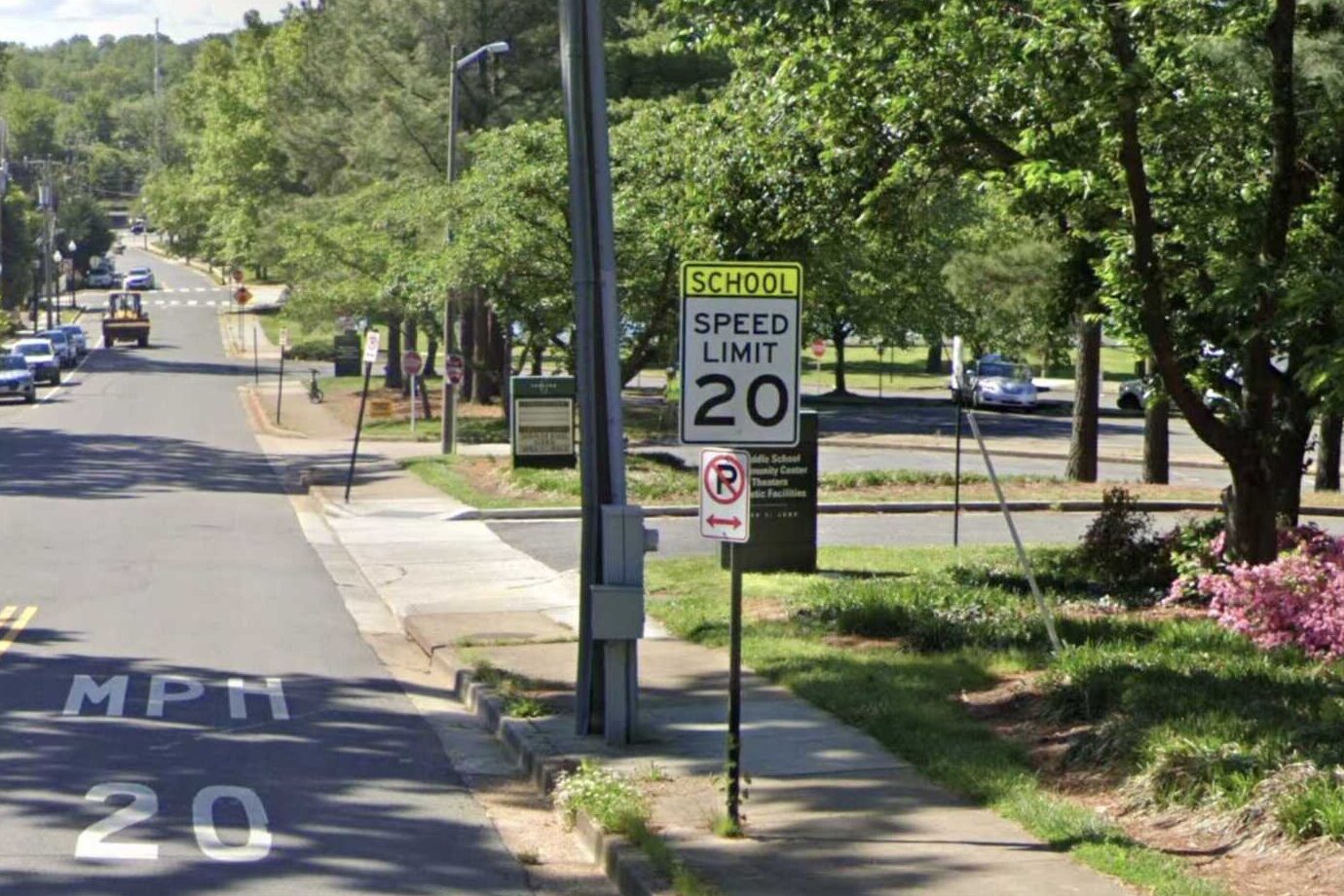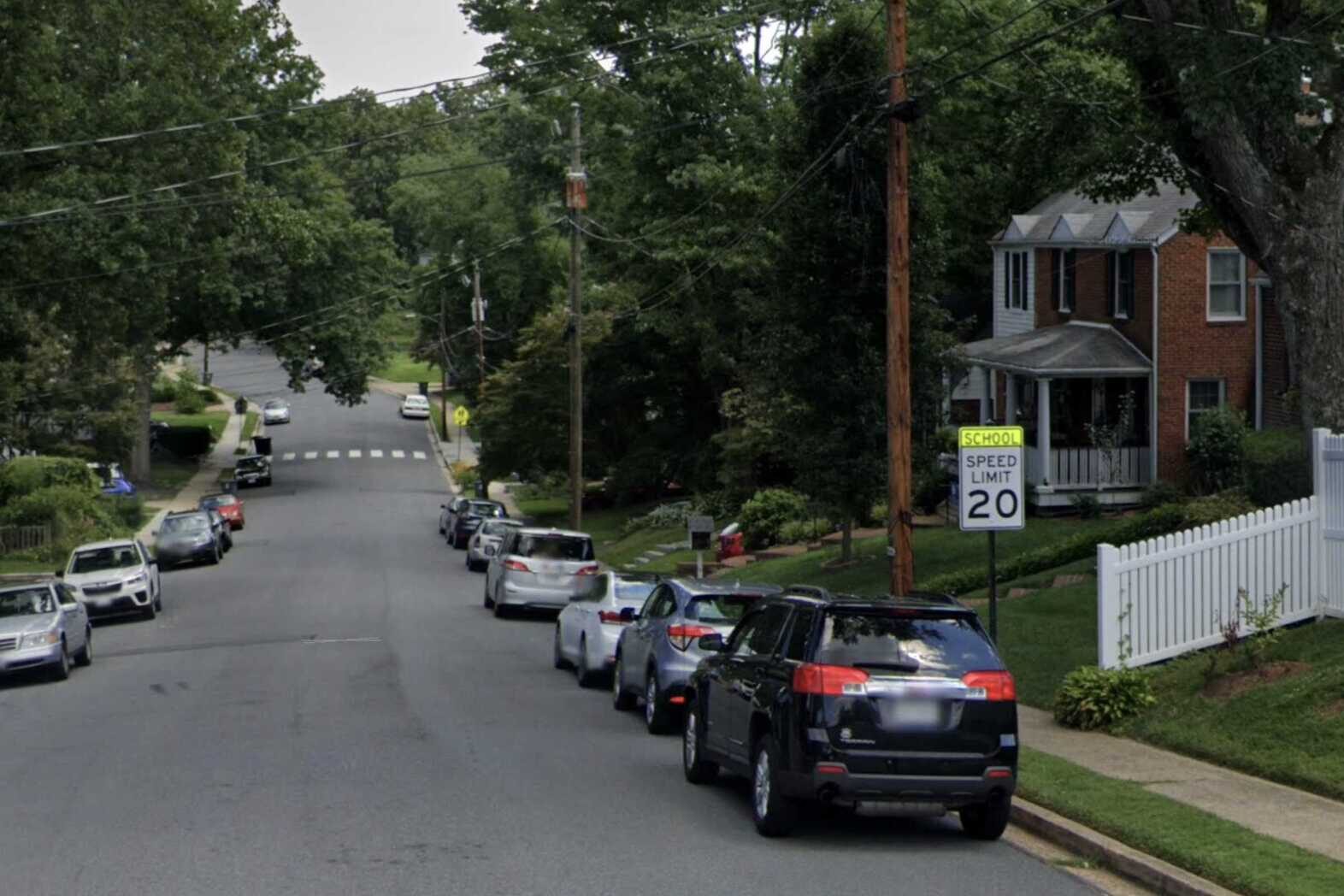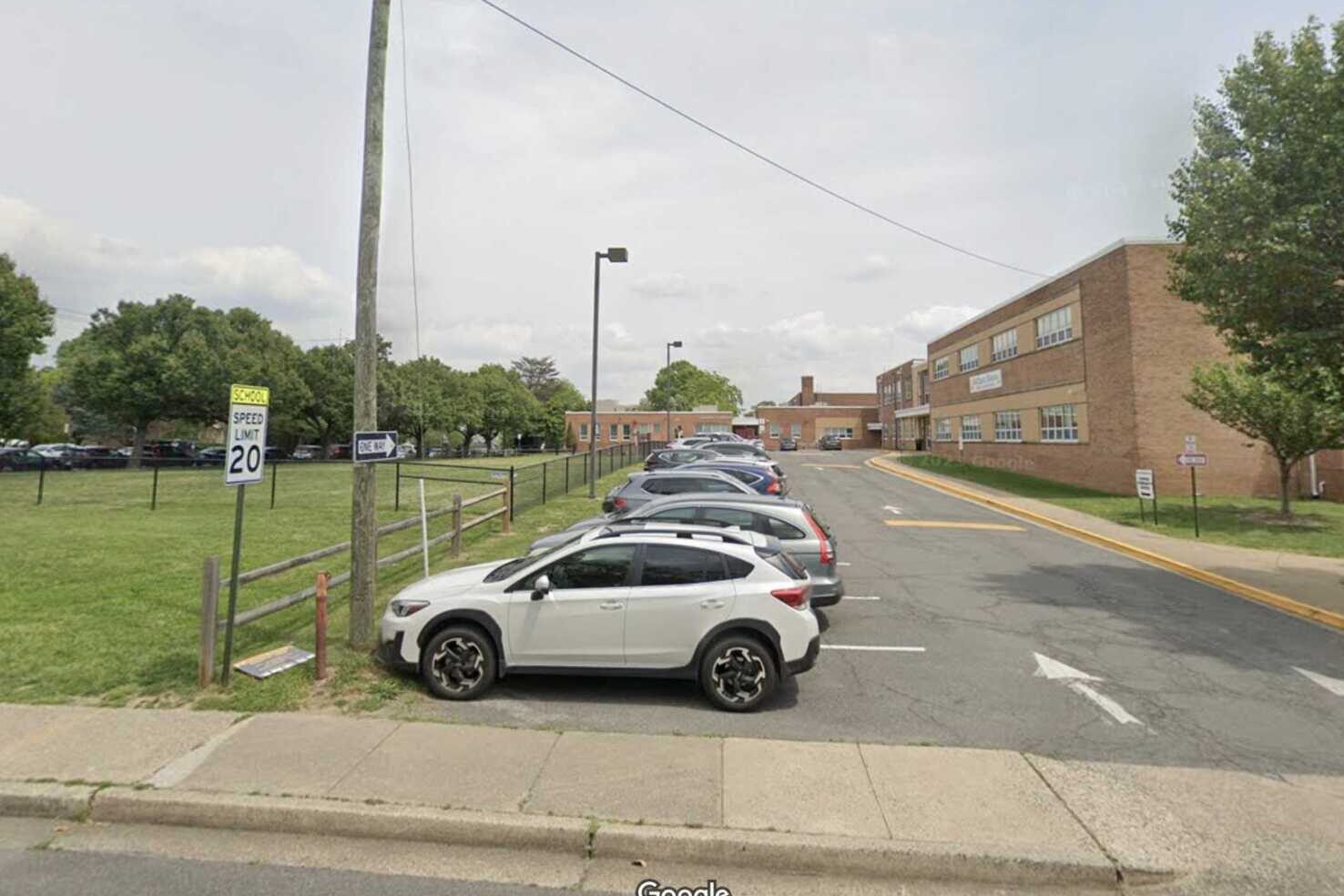It has been 10 years since Arlington County last put up speed humps to reduce speeding.
Now, they will be coming to streets around a trio of schools where lowering speeds to 20 mph has not stopped drivers from going well past the speed limit.
The humps will be installed this fall near Gunston Middle School and Cardinal and Hoffman-Boston elementary schools. The county will be piloting the humps as part of Vision Zero, the county’s resolution to eliminate traffic deaths and serious injuries by 2030.
“This initiative reintroduces speed humps through a limited pilot focused on reducing speeds in school slow zones where data shows the introduction of 20 mph speed limits has not lowered speeds,” says Dept. of Environmental Services spokeswoman Katie O’Brien.
Arlington County permanently dropped speeds on neighborhood streets within 600 feet of certain school access points to 20 mph. A vehicle going 20 mph has a much lower probability of seriously injuring or killing a pedestrian compared to one going 30 mph, according to government research and an investigative report.
Since the Arlington County Board approved the lower speed limits, signage alerting drivers to the changes has rolled out incrementally: 13 schools in 2022, 14 schools this year, and the remaining 19 school zones set for 2024.
At some of the 13 schools that have had lower speeds for a year, staff noticed the changes did not see slower speeds. They picked the three schools with the highest speeds for the pilot speed humps, O’Brien said.
Drivers can expect to see the humps pop up this fall on S. Lang Street, S. Queen Street and 19th Street N.

“The installation of a speed hump will likely take less than a day,” O’Brien said. “The pilot will use tactical speed humps because they are easy to both install and remove quickly, if needed. They are cost effective, tested for durability, and made from 100% recycled material.”
Staff will monitor the locations and collect data through the winter. O’Brien said they can easily remove them if new safety issues or concerns with the materials arise.
Next spring, there will be public engagement opportunities for people to share their thoughts on the addition of speed humps. Next summer, the county will identify next steps. That could include adding more speed hump sites in other school slow zones.
Speed humps were last installed through a Neighborhood Traffic Calming program, which ended in 2013.
Three years later, the County Board launched a new initiative to update roads: the Neighborhood Complete Streets program. When the program was adopted, “the Board included a moratorium on vertical traffic calming measures for three years,” O’Brien said.
Since then, DES has made use of other tools to manage speed and reduce accidents: speed feedback indicator signs, pavement markings, curb bump-outs, high visibility markings and protected bike lanes, among others.




